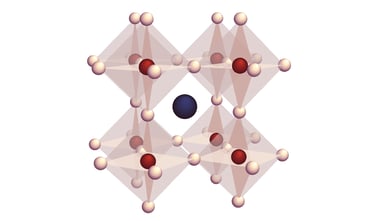This is important if one is seeking to study particular features in a material. Moreover, by varying the electron energy it is possible to access various depths and obtain (coarse) 3D information.
Higher electron energy leads to a better signal-to-noise ratio in the CL data. However, as the interaction volume increases, the lateral spatial resolution decreases. In order to help you with your experiment we created a database which can help you to find the “sweet spot” between high CL signal and high spatial resolution. You can now access a database of interaction volumes for the most commonly studied materials in CL. It provides an aid for optimizing beam parameters (specifically acceleration voltage), experiment interpretation and helps to obtain an overall understanding of the interaction volume in certain materials.
Simulations performed with the open 3D CASINO beam tracing program (Version 3.3.04, 2016) (Monte Carlo simulations of electron trajectories in solids) describes the interaction volume of the primary electron beam. In the full database, which is accessible below, you can find electron-material interaction positions in 3D (X,Y,Z) and the associated electron energy (E) for such materials as Sapphire, Diamond, Zircon, Silicon, Gallium Nitride and Gallium Arsenide and more.
Download the technical note and the raw and processed data here.
.png)






